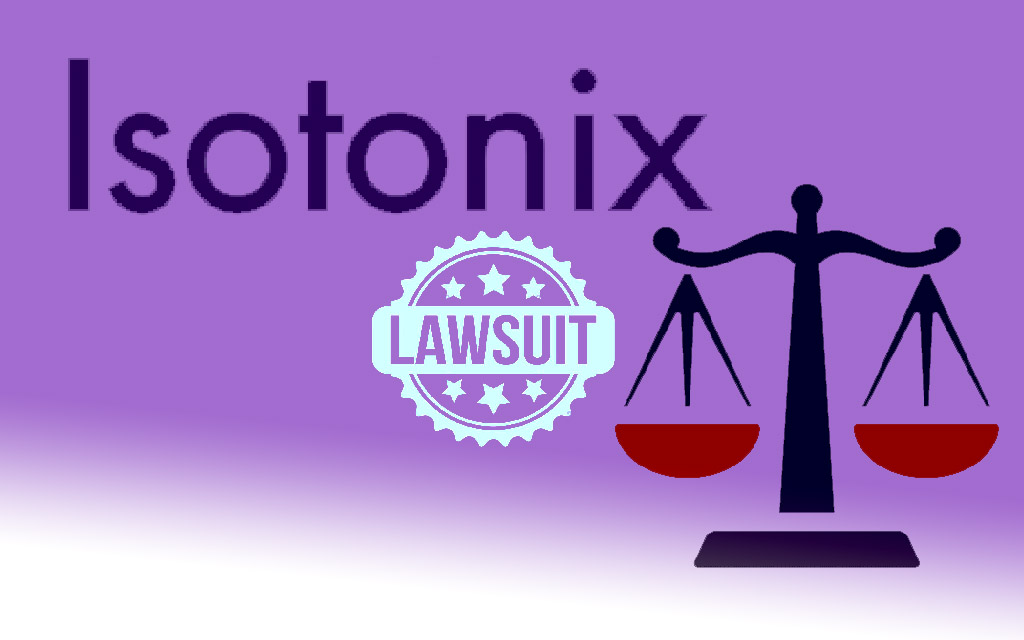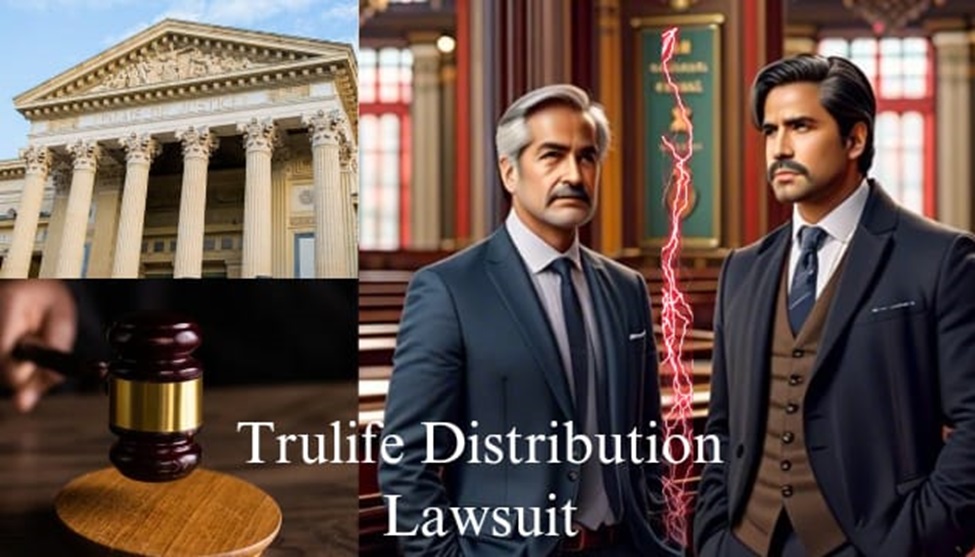The Ashcroft Capital Lawsuit has shocked the investment world. Many investors who once trusted the firm now feel confused and angry. A promising opportunity in multifamily real estate has become a serious legal battle. Allegations of misrepresentation and lack of disclosure have shattered confidence in Ashcroft Capital.
This lawsuit is not just a private dispute. It highlights the growing demand for transparency in investment companies. Even seasoned investors can get blindsided when promises, documents, and performance do not match. Legal accountability can reshape a firm’s future and change industry standards.
Today’s investment landscape demands greater due diligence, stronger regulatory frameworks, and deeper investor education. Understanding the Ashcroft case is crucial for everyone navigating private real estate deals. This article breaks down the lawsuit and explains how it could impact investors.
Who Is Ashcroft Capital?
Understanding Ashcroft Capital helps explain why this lawsuit matters so much. The firm built its reputation on strong growth and confident marketing. Ashcroft Capital is a private real estate firm founded in 2015. It focuses on buying, renovating, and operating value-add multifamily properties in the U.S. The company targets cities with strong job growth, rising populations, and housing shortages. Ashcroft often buys struggling properties, renovates them, and raises rents.
Ashcroft raised hundreds of millions of dollars from investors. Its deals mainly covered Texas, Florida, Georgia, and North Carolina. The company promised attractive returns through aggressive property improvements and better asset management. Its founders, including CEO Frank Roessler, often appeared on podcasts and webinars promoting the firm. Before the lawsuit, Ashcroft had closed more than 50 multifamily transactions. It was considered a rising star in the value-add real estate space.
What Events Sparked the Ashcroft Capital Lawsuit?
Understanding the lawsuit’s origin shows how fast trust can collapse. It started quietly and grew into a serious legal firestorm. Several investors raised concerns about missing financial details. They noticed gaps between promised returns and real outcomes. Some complained that risk factors were hidden in marketing documents. Others said their money was used differently than expected.
Emails between executives exposed more problems. Auditors later found mismatches between financial statements and investor promises, pushing investors to file formal lawsuits. Investors also cited inconsistent reporting practices. Quarterly updates often lacked transparency, raising more suspicion. As concerns spread across forums like BiggerPockets and LinkedIn, pressure on Ashcroft grew sharply.
What Are the Main Legal Claims in the Ashcroft Capital Lawsuit?
The legal claims explain why this lawsuit is so significant. They show serious concerns about trust, transparency, and regulation.
Misleading Marketing Materials
Investors claim Ashcroft presented overly positive forecasts. Marketing materials allegedly ignored major risks. Documents showed only the best-case outcomes, not realistic projections.
Some investors say early pitch decks promised 15–20% annual returns without explaining market volatility risks. Disclaimers were often buried deep inside lengthy offering memorandums, creating unrealistic expectations.
In some cases, properties underperformed badly against what was projected. This widened the gap between marketing promises and actual results.
Failure to Disclose Fund Usage
Another charge says Ashcroft failed to explain how it used investor money. Investors believe funds were moved or spent in ways not agreed upon.
Specifically, some funds earmarked for renovations were allegedly reallocated to cover operating shortfalls. Investors argue that Ashcroft did not seek proper approvals before making such changes. Transparent fund reporting is a core fiduciary duty. Violating this duty risks lawsuits and regulatory penalties.
Potential Violations of Securities Law
Plaintiffs argue Ashcroft may have broken securities laws. They say the company omitted key facts and misrepresented investment risks. Federal securities law requires full disclosure of material risks. Companies that omit important details or paint a misleading picture face serious consequences.
Potential penalties include fines, license suspensions, or bans from managing investor funds. SEC scrutiny often follows such investor lawsuits, especially when large sums or retail investors are involved.
Regulatory Investigations
Because of these claims, state and federal regulators are now investigating Ashcroft Capital and reviewing documents and investor complaints closely.
Multiple states, including Texas and Florida, have reportedly opened inquiries. Ashcroft could face civil penalties even if no criminal charges result. Regulatory action can also force changes in fund structure, investor communications, or asset management practices.
Who Are the Key Players in the Ashcroft Capital Lawsuit?
Knowing who is involved helps explain why this case is getting so much attention. Powerful players are on both sides. Ashcroft Capital remains active despite the lawsuit. Several top executives are named in the legal filings, including CEO Frank Roessler and senior partners involved in investor relations.
Investors pushing the lawsuit include individuals, self-directed IRA funds, and small institutions. Some have invested hundreds of thousands of dollars across multiple deals.
State regulators and other agencies are now involved too. Meanwhile, Ashcroft denies all wrongdoing and promises full cooperation. Legal experts believe discovery and depositions could reveal even more troubling facts soon.
How Has the Ashcroft Capital Lawsuit Affected Current Investors?
The lawsuit has created serious stress for existing investors. Many now question the safety of their money. Some investors have frozen their accounts or pulled out funds, while others are moving money to safer options. Fear of asset losses, delayed payouts, and fund failures has grown.
Portfolio managers report a sharp rise in redemption requests. Investors reviewing older fund documents are spotting vague language they once overlooked. Lawsuits like this often lead to fund withdrawals across the alternative investment space.
What Are Investors Saying About the Ashcroft Capital Lawsuit?
Investors are not staying quiet. Their reactions are loud, emotional, and focused on demanding answers. Many say they feel misled by polished marketing and overpromised returns. Online forums are filled with documents, screenshots, and angry debates. Some investors have already joined group lawsuits, and others are planning personal legal action.
Influencers warn about placing blind trust in sponsor brands. Analysts predict that syndications across the industry will face new scrutiny. The Ashcroft case has become a textbook warning for investors.
What Could Be the Possible Outcomes of the Ashcroft Capital Lawsuit?
The lawsuit’s outcome could reshape Ashcroft Capital and send shockwaves through the whole industry. If the court sides with investors, Ashcroft may face substantial financial penalties. The firm could be forced to restructure deals or accept outside oversight. Some investors may recover their money through settlements or other deals.
Regulators might impose fines or restrictions on Ashcroft’s operations. Investors fear ongoing uncertainty could damage property values, hurting all fund participants. Even if Ashcroft wins, reputational damage could limit future fundraising.
What Lessons Can Real Estate Investors Learn from the Ashcroft Capital Lawsuit?
Every investor can learn from what is happening here. Ignoring these lessons could lead to huge future losses.
- First, never rely only on marketing materials. Investors must carefully study financials, management history, and contracts.
- Second, always ask about how funds are managed.
- Third, diversify investments across different managers and sectors.
- Fourth, investors should read all offering memorandums fully, not just the executive summary. Hiring independent counsel before investing large sums is also critical.
- Finally, if returns sound too good to be true, they probably are. A skeptical approach protects both your capital and your future.
How Has the Investment Industry Responded to the Ashcroft Capital Lawsuit?
The lawsuit is already influencing changes across the real estate investment world. Some companies are rewriting investor communications, tightening internal compliance, and adding new training programs. Industry associations are calling for stricter rules on advertising and disclosures.
Large firms like Blackstone and Starwood Capital have increased risk disclosures since 2023. Smaller sponsors are also adopting third-party audits to build credibility. Investors now demand cleaner, simpler offering documents. Today, firms prioritizing transparency, ethics, and clear communication have a serious edge over competitors.
How Can Ashcroft Capital Rebuild Trust After the Lawsuit?
Fixing trust will take much more than public statements. Investors are watching and waiting for real change. Ashcroft may need to submit to independent audits and disclose full fund records. Real reforms, not promises, are the only way back.
Leadership shakeups might be required. New compliance policies could also help restore some investor confidence. Without dramatic changes, rebuilding trust will remain very difficult. Investors want action, not words. Only visible steps toward transparency can rebuild damaged relationships.
Why Does the Ashcroft Capital Lawsuit Matter for Everyone?
This case affects more than one company. It touches every investor, advisor, and real estate firm. The Ashcroft Capital Lawsuit reminds everyone that ethics, honesty, and full disclosure are not optional. These values are now basic requirements. Investors must stay alert, skeptical, and demanding at every stage of every deal.
The lawsuit also signals to regulators that private offerings must be better policed. Future rules could tighten fundraising and marketing practices across all real estate syndications. The lessons from this case will shape the industry’s future for years.
Frequently Asked Questions About the Ashcroft Capital Lawsuit
What is the Ashcroft Capital Lawsuit about?
The lawsuit alleges Ashcroft Capital misled investors by omitting or misrepresenting financial and operational risks in marketing materials.
Who filed the lawsuit?
A group of individual and institutional investors initiated the lawsuit, which later expanded toward a potential class action.
What are they asking for?
Investors seek financial restitution, legal costs, improved compliance measures, and third-party oversight of future activities.
What does this mean for new investors?
New investors are urged to exercise caution, conduct independent reviews, and carefully vet promotional materials.
Is Ashcroft still operating?
Yes, Ashcroft Capital continues operations while simultaneously defending itself against ongoing legal actions.
Where can I follow updates?
Updates are available through financial media, legal blogs, and Ashcroft Capital’s official investor relations website.
Could this impact other investment firms?
Yes. New precedents set by this case may influence compliance standards industry-wide.
Is it too late to join the lawsuit?
Depending on individual circumstances, new claimants may still join. Consulting a securities litigation attorney is recommended.
Can Ashcroft recover its reputation?
While recovery is possible, it will require major transparency efforts, independent audits, and demonstrable investor-centric reforms.
What precautions should investors take in light of this lawsuit?
Investors should verify offering details independently, demand full disclosure, and consult financial and legal advisors before committing.


